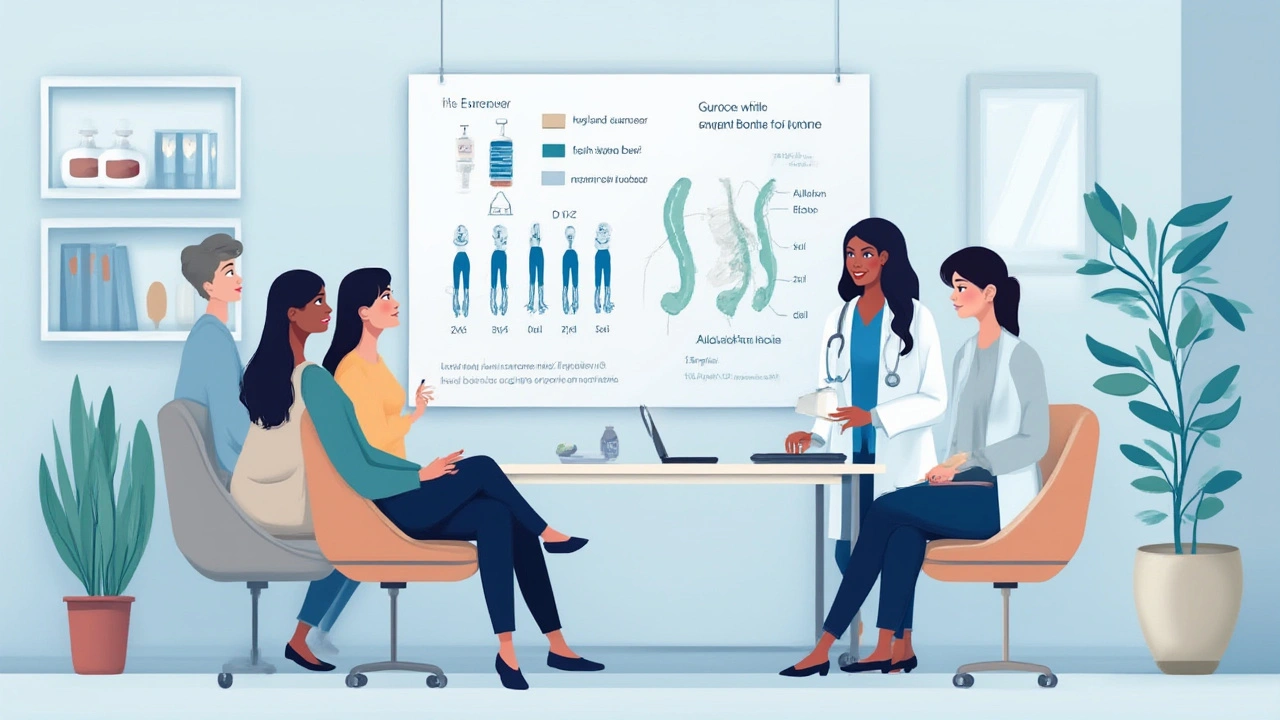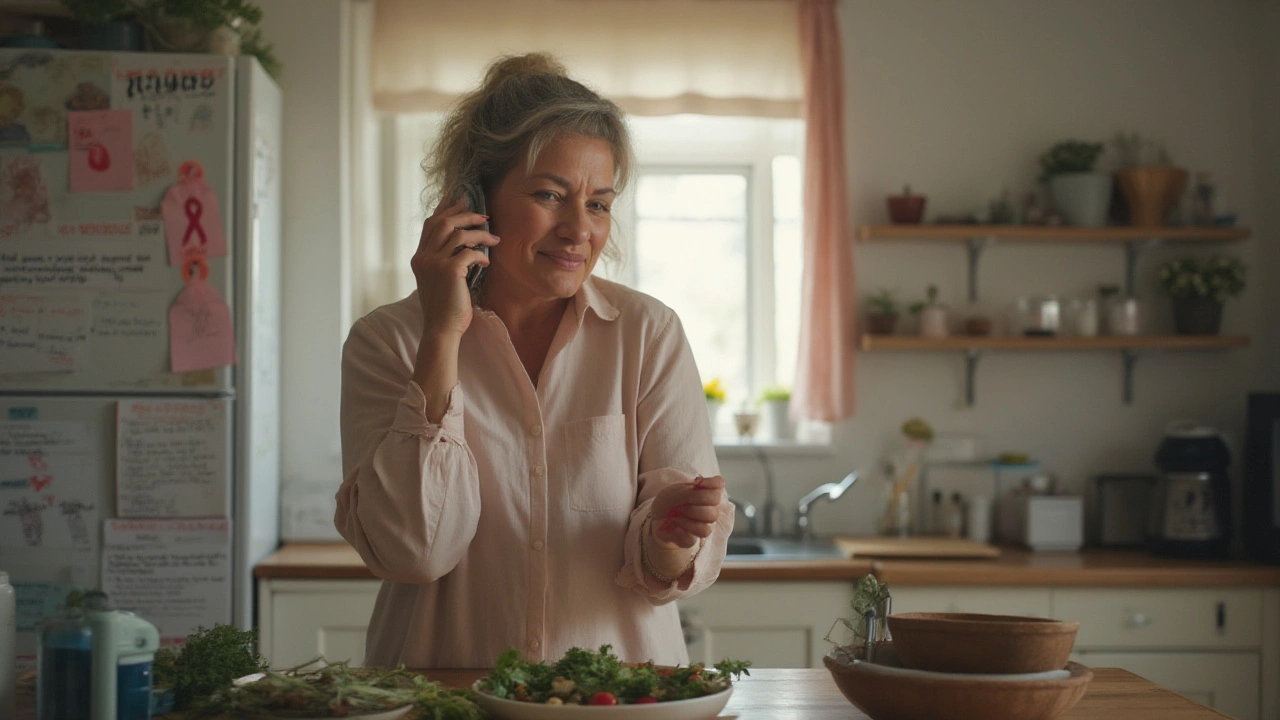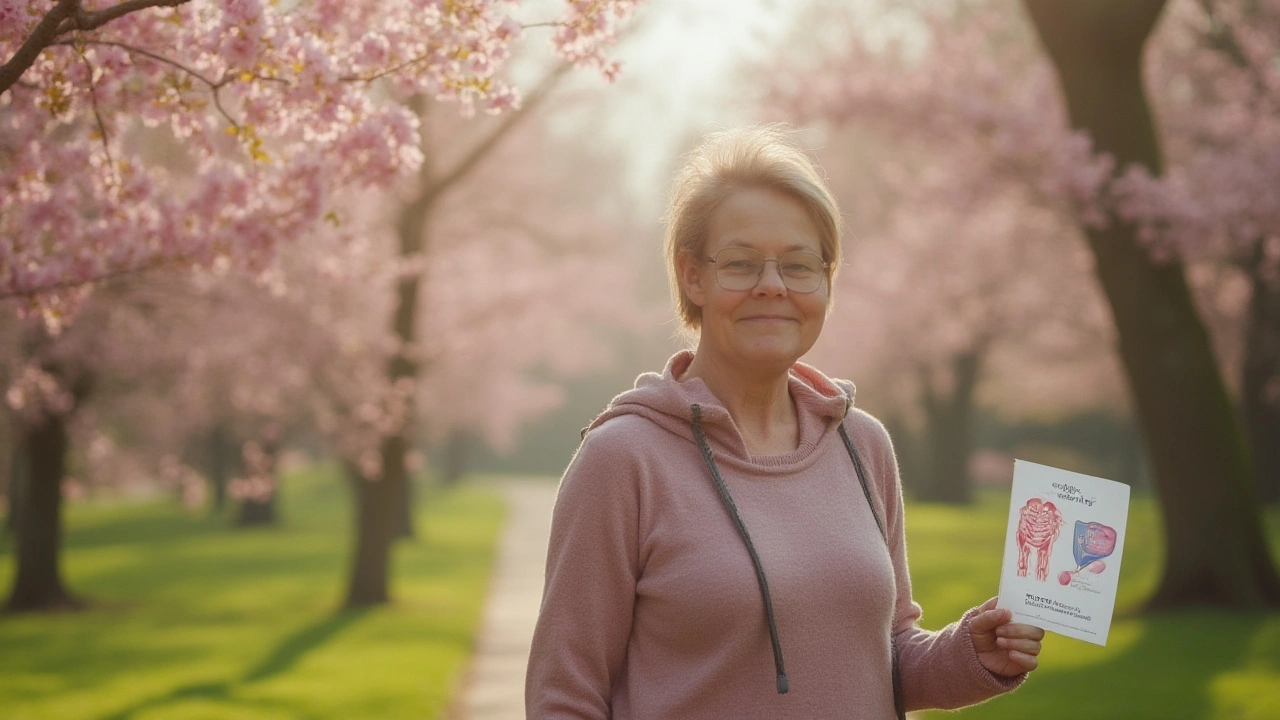Few words in women’s health spark as much curiosity—and debate—as Evista. Picture a small, white pill on your bedside table, promising stronger bones and a lower risk of breast cancer. Big claims, right? But here’s the kicker: behind those promises is a mountain of real science and some pretty surprising stories from women who have walked the talk. If you’ve ever wondered how a single medication could change the trajectory of menopause and bone health, you’re definitely not alone. The funny thing is, most of us haven’t even heard of Evista until the doctor brings it up as a solution, usually somewhere between a chat about hot flashes and “Have you had your bone density checked lately?” Let’s unpack what’s really inside that pill, why your doctor might suggest it, and what kind of changes you could actually notice once you start taking it.
What Is Evista and How Does It Work?
Evista is the brand name for raloxifene, a medication that’s been quietly making a difference in women’s lives for more than two decades. Approved by the FDA in 1997, it landed on the market as a game changer for women dealing with postmenopausal osteoporosis. The science is pretty fascinating—Evista belongs to a group of drugs called SERM (Selective Estrogen Receptor Modulators). What does that mean? Well, SERMs are kind of like shapeshifters; they act like estrogen in some parts of the body but block its effects in others. In your bones, for example, Evista mimics estrogen to help maintain bone density after menopause, which is when osteoporosis risk skyrockets. But in breast tissue, it actually acts as a blocker, which is why it’s been used to lower the risk of invasive breast cancer in postmenopausal women.
This double action is why doctors love prescribing it for women who might benefit on both fronts. Bones and breasts: both get extra support, but for different reasons. The latest research, published by reputable sources like the Mayo Clinic and backed by years of data, shows that Evista can reduce the risk of osteoporotic fractures by up to 50% in the spine. If you’re wondering about bone density numbers, studies reveal that women on Evista for at least three years see their bone mineral density stabilize or even climb modestly—sometimes as much as 2-3% higher, while women not taking it often see declines.
Check out this comparison from a recent clinical trial:
| Group | BMD Change (3 years) | Spinal Fracture Risk |
|---|---|---|
| Evista | +2.6% | -49% |
| Placebo | -1.7% | 0% |
Here’s something I love: Evista doesn’t increase risks the way regular estrogen supplements can. You might have heard about hormone therapy linking to uterine or breast cancer. Evista sidesteps those complications, making it a sweet spot for many women, especially those with a family history of breast cancer who aren’t comfortable rolling the dice with straight-up estrogen.
Benefits of Evista Beyond Bone Health
Bones are the headline, but Evista is actually multitasking in the background. The clearest bonus? It slashes the odds of getting invasive breast cancer, especially for women with higher risk factors. According to data pooled from studies with thousands of women, those taking Evista had a 56% lower chance of getting hormone-positive breast cancer compared to nonusers. That’s a huge deal if you find yourself dreading the annual mammogram results because of family history.
There’s another perk worth mentioning: Evista doesn’t cause uterine hyperplasia, which is a fancy way of saying it doesn’t thicken the uterine lining. Estrogen therapies sometimes do that, potentially leading to gynecological issues. No such worry here. More good news? It doesn’t drive up cholesterol in most women. Some women even see mild improvements in "good" cholesterol numbers, making it a small helper in the ongoing fight against heart disease.
The practical impact feels real when you tally up all the benefits: fewer bone fractures, less fear of breast cancer, plus a therapy that’s simpler to fit into your day than, say, daily injections or full-scale hormone patches. You just take one pill a day, with or without food. And unlike bisphosphonates (like Fosamax or Boniva), which can be rough on the stomach and require you to sit upright, Evista is more forgiving to your digestion and your daily schedule.
It’s not all perfect, of course. But for many women—including those juggling family, jobs, and aging bodies—it’s a lifeline. And even if you’re already a few years into menopause and haven’t started Evista, studies show there are benefits if you begin later, too. You don’t have to catch the train at the first stop—you just need to be on board before bone loss really snowballs.

Possible Side Effects and What to Watch Out For
No medication is a free lunch, and Evista brings its own quirks and downsides. The standout side effect? Hot flashes. Yep, the very thing many of us hoped to leave in the rearview mirror. The odd twist is that for about one in ten women, Evista can actually bring back hot flashes or make them worse, at least in the short term. If you’re lucky, your body will adapt and the symptoms will fade.
Another risk that gets a lot of attention: blood clots. Like estrogen therapies, Evista slightly raises the chance of developing deep vein thrombosis (DVT) or a pulmonary embolism. It’s not common—estimates put it at less than 1%—but it’s worth a conversation if you have a personal or family history of clotting problems. A quick call to your doctor if you notice unusual swelling, leg pain, or shortness of breath is always smart.
Some women notice leg cramps, mild swelling in the feet, or a feeling of fullness. A small group saw a mild increase in hot flashes, but for most, that was the extent of it. Headaches pop up in about 15% of users but usually don’t last beyond the first few weeks.
Now for a ray of hope: serious complications are rare, and almost all mild side effects fade by the third month. Experts recommend starting Evista at a low-stress time and keeping some notes about any changes your body goes through. Communicating regularly with your healthcare team leads to quick tweaks if something feels off.
Real-World Tips for Women Considering Evista
You’ve heard the stats, but how does this play out day to day? First up: don’t wait for your doctor to suggest a bone scan. Ask about it if you’re in menopause or older than 55. Too many women are caught off guard by low bone density, and early action means more options.
If you’re thinking about Evista, bring up your full medical history, especially if you’ve had blood clots, heart disease, or liver issues. Always let your provider know what supplements you’re taking—including vitamin D, calcium, and any herbal products. Some supplements (especially those with extra estrogen or phytoestrogens) can affect how Evista works.
Here’s a checklist I like to share:
- Take your daily dose at the same time to keep blood levels steady.
- Stay active. Weight-bearing exercises like walking, dancing, or simple home yoga sessions boost bone strength and compound Evista’s benefits.
- Don’t skimp on calcium and vitamin D. Nothing undoes all this hard work faster than shortages here. Most women need 1,200mg calcium and 800 IU vitamin D per day, either from diet or supplements.
- Hydrate, hydrate, hydrate. Some side effects (especially leg cramps) feel milder when your body is well-watered.
- Schedule regular follow-ups. Plan a bone density scan every two to three years, plus yearly check-ins with your provider to monitor breast health.
Keep a symptom diary. It sounds old-fashioned, but noting even mild side effects helps you spot patterns, making it easier for your provider to adjust your care plan fast if needed.

Frequently Asked Questions and Misconceptions about Evista
People bring a lot of questions to the pharmacy counter about Evista, but plenty of myths make the rounds, too. Some worry it will cause weight gain—there’s no good evidence for that. A handful of women may notice tiny fluid shifts at the beginning, but it isn’t a weight gain culprit by any means. Others think it increases the risk of breast cancer. While regular hormone therapies can, Evista actually lowers that risk by blocking estrogen in breast tissue—especially in women with a strong family history or genetic links.
Another common worry: “Is Evista as effective as traditional hormone therapy for bones?” The answer depends. For some women, especially those who can't (or don’t want to) use estrogen, Evista is a solid backup plan. It may not restore bone loss as aggressively as some hormone therapies, but it shines at keeping existing bone strong and stable—especially in your spine. Not a miracle, but a really steady hand to curb big losses.
If you’re thinking long-term, Evista’s effects continue as long as you take it. Take a break, and your bones risk tipping toward the negative again, especially without strong backup from exercise, calcium, and vitamin D. And don’t forget dental visits. Some medications for osteoporosis can hurt your jaw, but Evista doesn’t share this odd risk.
One more big question: Can Evista help with menopausal symptoms apart from bones and breasts? Not really. Hot flashes, mood swings, and vaginal dryness aren’t really on its list of targets. If those are your main menopause complaints, other options—like low-dose hormone therapy or plant-based therapies—might fit better.
The bottom line: Evista isn’t a magic bullet, but it’s a uniquely targeted tool for women at the crossroads of bone and breast health. Talk honestly with your provider, weigh the benefits against risks, and collect real stories from other women who’ve gone down this path. And if you spot that little white pill on your own nightstand soon, know you’re in good company—millions of women have gained stronger bones and peace of mind from Evista’s kind of help.
